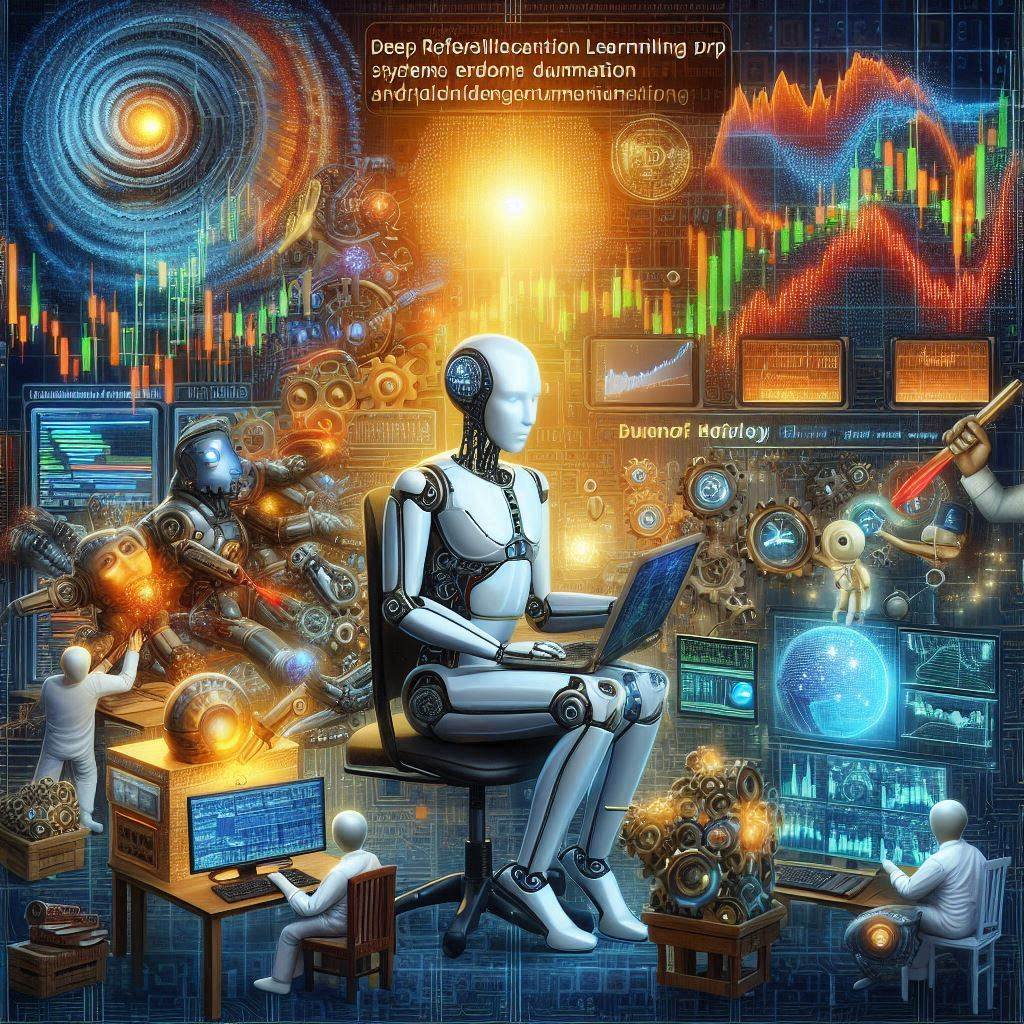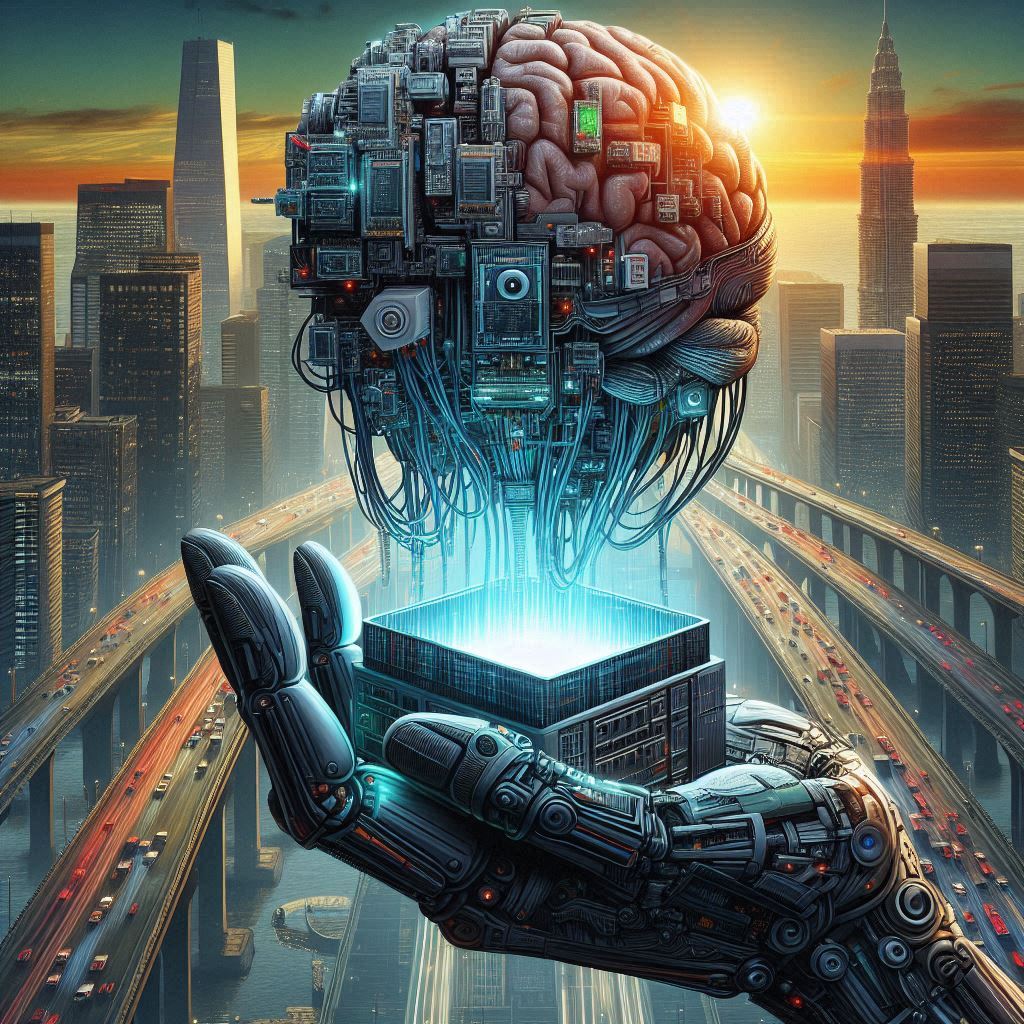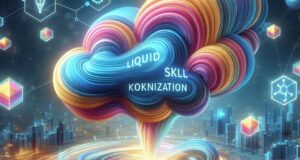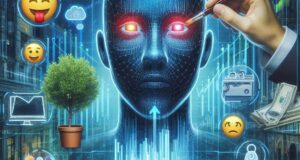In the world of future prop firms, trading will no longer rely solely on static models or human-imposed strategies. Instead, it will evolve into a dynamic, self-learning process driven by deep reinforcement learning (DRL) systems. These systems will act like traders in their own right, learning from their actions, adapting to market conditions, and continuously refining their strategies. Think of them as resilient apprentices in a vast market, each learning through trial, error, and feedback, just like a person learning to play a challenging game. Here’s how this will unfold:

1. The Self-Learning Engine: A Trial-and-Error Journey
- Traditional trading models can be compared to a map that guides the trader through a predetermined set of directions. It follows a rigid path, with limited flexibility, and any sudden deviation can lead to failure.
- Deep reinforcement learning (DRL), however, can be likened to a navigator who doesn’t have a fixed path but learns the best route by continuously exploring the terrain, adjusting its course based on feedback.
- In this analogy, the market is the terrain, filled with unseen obstacles and ever-changing conditions. The DRL model navigates this by exploring different strategies, learning from mistakes, and adjusting its approach based on rewards (profits) and punishments (losses).
- Future prop firms will employ these DRL systems, allowing them to evolve over time. They will not be static; they will adapt and improve, learning from each market cycle, ensuring that their strategies are always in tune with the market’s dynamic nature.
2. The Adaptive Trader: Evolving with Market Conditions
- Think of static strategies as tools designed for specific tasks. They’re effective in a certain environment but struggle when conditions change.
- DRL systems, in contrast, function like shape-shifting tools, continuously adapting their form to fit the task at hand.
- In volatile markets, where conditions can change at the drop of a hat, these systems will not be thrown off course. Instead, they will evolve, testing new methods, adapting to different market conditions, and fine-tuning their approaches based on past results.
- In future prop firms, the use of DRL will allow traders (and the firms themselves) to stay ahead of the curve, not simply by reacting to market trends, but by actively learning from them and evolving their strategies with each new cycle.
- Traditional systems might be seen as students who learn once and then apply that knowledge, often missing the nuances of change and context.
- DRL models, on the other hand, are like researchers in a lab, constantly running experiments, collecting data, and refining their methods.
- They start with limited knowledge and improve over time, each iteration of the model bringing it closer to a perfect understanding of market behavior.
- In future prop firms, this continuous learning will drive superior performance. With every market fluctuation, the system will evolve, becoming sharper and more precise. This constant improvement ensures that the trading strategies used by the firm are always aligned with the market, giving them a competitive edge.
4. Objection: “Doesn’t Self-Learning Increase the Risk of Unpredictability?”
- Critics of DRL might argue that, in learning through trial and error, these systems might encounter unforeseen consequences, potentially increasing the risk of unpredictable behavior or high volatility in results.
- They could question whether letting the algorithm evolve on its own without human oversight could lead to undesirable outcomes, especially in the unpredictable world of trading.
- Rebuttal: While it’s true that deep reinforcement learning involves a form of exploration that could seem risky at first glance, the systems are carefully designed with guardrails that ensure any learned behavior is within the bounds of acceptable risk.
- These systems learn by testing hypotheses within a defined risk framework, meaning that even when they make mistakes, the feedback mechanism pushes them to refine their approach without crossing thresholds of excessive risk.
- In future prop firms, these systems will not operate without oversight. Rather, they will complement human traders and analysts, working in tandem with human judgment while ensuring that the learning process is efficient, safe, and aligned with the firm’s risk tolerance.
5. The “Game of the Market”: Adapting Strategies in Real-Time
- Traditional strategies often follow set algorithms with fixed parameters, akin to playing a game by the rules, where the strategy remains unchanged even if the game evolves.
- DRL strategies are more like game players who don’t simply follow the rules—they learn and adapt to the evolving game, anticipating moves and reacting in real time.
- In the context of trading, the “game” is the market, with its twists, turns, and unpredictability. A DRL system adjusts its moves based on both historical data and immediate feedback, constantly tweaking its strategy as the game unfolds.
- This adaptability is particularly valuable in future prop firms, where the market landscape can shift dramatically in short periods. DRL models will provide these firms with a system that doesn’t just survive the chaos—it thrives in it.

6. The Speed of Evolution: Outpacing Static Models
- Static trading models can be likened to ships that are designed to follow one course, requiring manual effort to adjust their direction. As markets change, these ships can struggle to stay on course.
- DRL systems are more like autonomous drones that adjust their flight path in real time, continuously optimizing their route for maximum efficiency.
- They learn not just from past data but from every moment of interaction with the market, adapting at speeds that would be impossible for human traders or static models to match.
- In future prop firms, this will allow traders to use DRL-based systems to stay ahead of their competition, dynamically adjusting their strategies to gain an edge.
7. Rewarding the Evolution: Incentive Structures for Success
- Static systems offer limited reward structures, often based on consistent performance within a given framework.
- DRL systems, however, evolve their reward structure continuously. The algorithm receives rewards not just for profits, but for its ability to adapt and refine its strategies over time.
- This constant feedback loop incentivizes not only short-term profitability but long-term adaptability—ensuring the system remains valuable in an ever-changing market.
- Future prop firms will integrate these reward structures, motivating DRL systems to keep improving, learning, and outperforming the competition, ensuring they remain effective even as the market evolves.
Deep reinforcement learning systems will be the next frontier in trading. By enabling trading strategies to continuously self-learn, adapt, and improve through trial and error, these systems will provide future prop firms with unmatched flexibility and precision. In a world where market conditions can change rapidly, DRL systems will offer a competitive edge by outperforming traditional static models, creating a new breed of self-evolving traders that can thrive in chaos and change.




